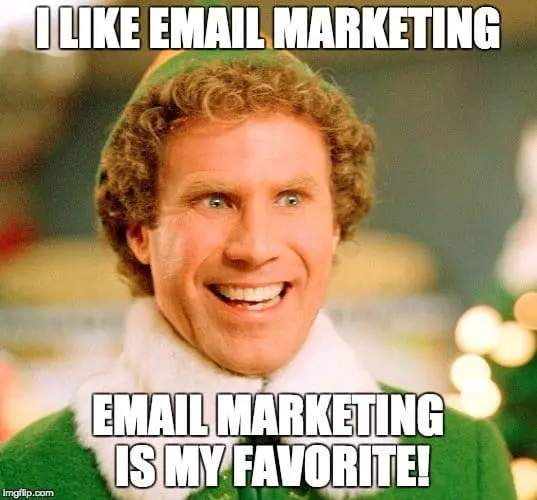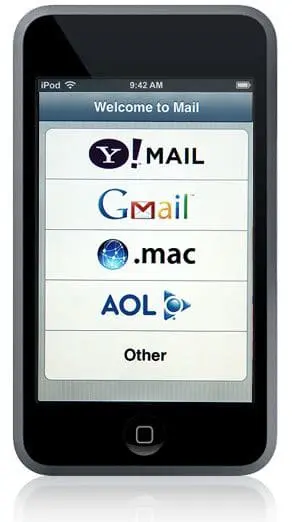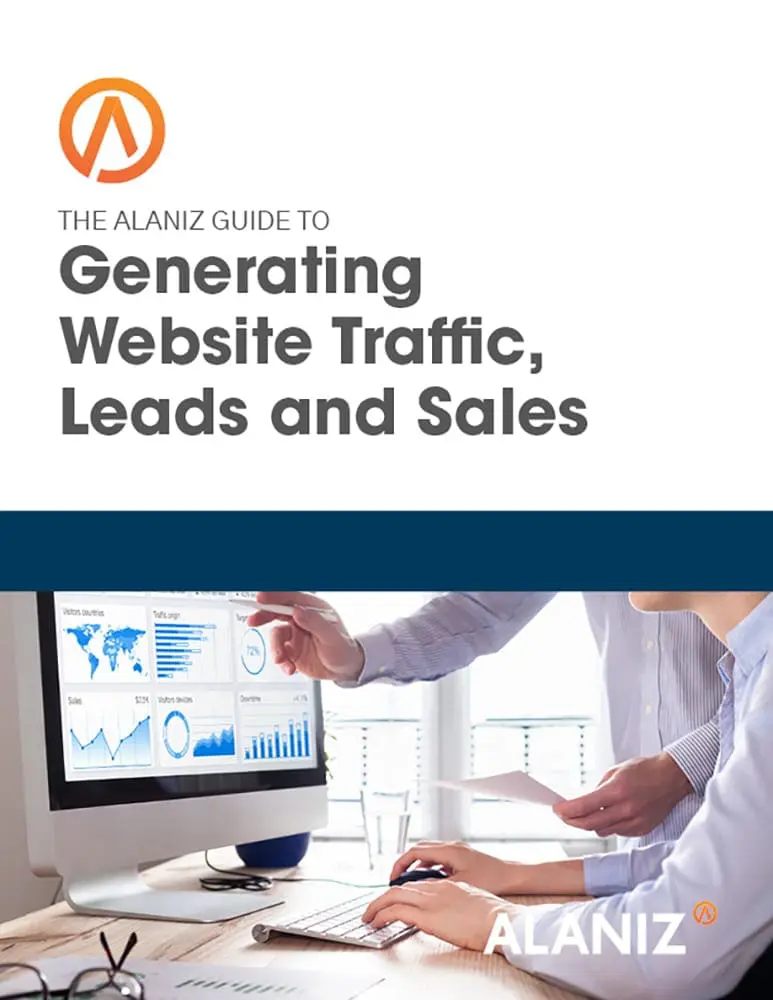 If you’re new to email marketing, you’re probably excited about sending out lots of emails to your customers. But if you’re in a rush, you might end up sending emails to people who have forgotten about you, or, worse, didn’t give you permission in the first place. You might accidentally send the wrong kinds of emails or use language that offends your recipients. Even stuff like using an unprofessional reply-to address can get you in trouble for spamming. And trust us—you don’t want to end up in junk folders or on blacklists. Or sued.
If you’re new to email marketing, you’re probably excited about sending out lots of emails to your customers. But if you’re in a rush, you might end up sending emails to people who have forgotten about you, or, worse, didn’t give you permission in the first place. You might accidentally send the wrong kinds of emails or use language that offends your recipients. Even stuff like using an unprofessional reply-to address can get you in trouble for spamming. And trust us—you don’t want to end up in junk folders or on blacklists. Or sued.
So before you start blasting campaigns, check out these common mistakes that email marketing rookies often make.
Mistake #1: Not having permission
Before you can send any email marketing material, you must have permission from every single one of your recipients.
If your initial reaction to that statement was, “But what if…,” then stop what you’re doing, because you don’t have permission.
Permission means that people requested email marketing from you. Before investing your time and money in an email marketing program, start getting permission from your customers. It’s easier than you think, and it’ll result in fewer spam complaints, better deliverability, decreased legal liability, and—most importantly—better open and click results.
Most email providers, like MailChimp, automatically ask for a permission reminder in your campaigns. When you’re creating a new list in one of these providers, you’ll have to include a reminder. And every time you manually add someone to your list, you’ll have to promise that your subscribers asked to receive your newsletter.
Mistake #2: Confusing transactional emails with email marketing
Got a list of customers who purchased products from your e-commerce store? They’ll expect email receipts and email shipping notifications. Those are transactional emails, and they’re different from email marketing. Email newsletters, coupons, and promotions are considered marketing or commercial emails. If you send marketing email to a list of people without their permission, then you’re sending unsolicited commercial email (UCE), otherwise known as spam.
Email newsletters, coupons, and promotions are considered marketing or commercial emails. If you send marketing email to a list of people without their permission, then you’re sending unsolicited commercial email (UCE), otherwise known as spam.
Understand where that line is drawn, because if you cross it, you can expect a call from the FTC for violating their CAN-SPAM law. You might also get sued. Which is to say: Don’t be a spammer.
Mistake #3: Being in a rush
The biggest mistakes happen when marketers “have to get this campaign out yesterday!” They don’t do the proper design and coding. They don’t think through the content. They don’t plan their subject lines (perhaps the most important factor in your open rate). They don’t make sure their list is clean and totally opt-in. They ask the sales team, “Hey everyone, I’m blasting out an email. Gimme all your contact lists!” What happens next?
Broken emails go out to lots of people who never opted in, forgot who you are, don’t remember signing up for your emails or haven’t heard from you in years.
So what do they do? They click the “This is junk” button in their email program (studies show that anywhere from 10-30 percent of recipients have done this, even to emails they requested, thinking it was the only effective way to unsubscribe from a list).
Then what happens? Alerts get sent to their ISPs, who in turn blacklist the sender for spamming.
So slow down, take a breath, and make sure your list is in tip-top shape before you push it out the door.
Mistake #4: Assuming people want to hear from you
Did everyone on your list specifically give you permission to email them? If not, then you’re just assuming they want to hear from you. Big mistake.
They’re going to report you as a spammer. Even if you “spent lots of time putting together that list of prospects.” Even if you “spent lots of money for this opt-in list.” Even if the list is made up of “people in your industry who have certainly heard of you.” If they didn’t specifically ask for emails from you and you put them on your email-marketing list, then you’re sending spam.
This concept seems to confuse a lot of people. They say, “But I get emails all the time from people I’ve never heard of, and I appreciate it.” Know that it’s different if someone sends one email directly to you, with a sales pitch.
But when that same person crosses the line and “blasts” his sales pitch to an entire list of people, it quickly becomes spam. So don’t send email campaigns to a list of mere prospects, and don’t just compile all your sales contacts lists (some of them will just be possible prospects who’ve never even heard of you), and never, ever, ever purchase email address lists (even if they’re “opt-in”).
If you have a list of clients and customers that know you, but they haven’t exactly opted-in for newsletters from you, then send them personal, individual email invitations asking them to join your list.
Mistake #5: Assuming people know who you are
We’ve seen some marketers who created nice email signup forms a long time ago, and they’re just now getting around to sending emails.
Even though they responsibly acquired every recipient’s permission before sending, those recipients have most likely have forgotten who you are and what you do, in the time since they signed up.
So when they get a full-blown email newsletter out of the blue, they report the sender for spamming. This happens more often than you think. A lot of email experts say that permission goes stale after only six months. If you’re not regularly contacting your list, then assume the old emails have already forgotten you. You’ll need to send them a “Remember me?” email.
Mistake #6: Purchasing email lists
By now, everyone should know better than to buy a “totally legitimate list of 30 million opt-in emails” via some sketchy piece of spam they got. That’s pretty obvious, but there are still some vendors out there selling “opt-in” lists the old-fashioned way. They collect email addresses and ask members if they’d like to “receive special offers from third parties.”

Then, they sell those email addresses to other people. It’s not technically illegal, but it sure is stupid. The correct way to do it is to keep the list, and then send special offers on behalf of third parties. Be wary of any groups that just want to give you a big list of emails. They should be doing the delivery for you, so their recipients will recognize the sender, and so you won’t get reported for spam.
Mistake #7: Forgetting to double-check the list before sending
We’ve seen some people send email marketing campaigns to lists that are obviously not permission-based. If you do that, you’re breaking your email provider’s terms of use—and breaking the CAN-SPAM law. Yes, you can be held liable for spam when sending on behalf of someone else.
Mistake #8: Thinking “blast” instead of “Relationship”
We see this all the time and cringe when someone asks us if we can help them “blast” an email out to people.
For one, the word “blast” should only be used in reference to missiles and tanks. Not permission marketing. Secondly, when people say “blast,” it usually means they think email is just a way to shoot out a bunch of emails, whether people want to hear from them or not.
Email is all about getting permission from customers, sending them stuff they want to read, and listening to their feedback.
Mistake #9: Writing like a used car salesman
Since email is so affordable (basically, it’s free!), it’s often the first attempt at “real” marketing that small businesses make. Unfortunately, small businesses aren’t necessarily writing experts. Instead of thinking, “Hmm, how would XYZ company write this email?” you should stop and ask, “Hmm, what would my customers find useful in my email?”
Don’t use pushy sales copy, like “BUY NOW!!!!” or “LIMITED TIME OFFER!!!” in email. It’s obnoxious.
Plus, Spam filters will penalize you for using what they consider “spammy” content.
How spam filters think
Spam filters look at a long list of criteria to decide whether or not an email is junk. These items are almost always on their lists ofspammy criteria:
- Going crazy with exclamation points!!!!!!
- USING ALL CAPS BECAUSE IT’S LIKE YELLING IN AN EMAIL OMG
- Coding sloppy HTML (usually from converting a Microsoft Word file to HTML)
- Coloring fonts bright red or green
- Using the word “test” in the subject line
- Creating an HTML email that’s nothing but one big image, with little or no text
Mistake #10: Forgetting to test in lots of programs
 Emails look different depending on which email program you use to view them. Just because it looks good in the preview window or when you send a test to yourself doesn’t mean it’ll look like that for all your recipients.
Emails look different depending on which email program you use to view them. Just because it looks good in the preview window or when you send a test to yourself doesn’t mean it’ll look like that for all your recipients.
You should set up a few accounts with free email services like Yahoo!, MSN, Hotmail, and Gmail. If possible, set up “home accounts,” like with AOL, Earthlink, Comcast, and Roadrunner. Test on different computers and operating systems, like Macs and PCs.
If you don’t have the budget to build test computers (who does?), just enlist a few friends or volunteers at the office. Send them tests, and ask them to tell you if the email looked weird in their software.
And don’t forget to check you emails on mobile devices, at least Android and iPhone. Two-thirds of email users in the US open their email on a mobile device. Be sure your email looks good on tablets and smartphones.
Mistake #11: Sending with a personal reply-to address
When you invite customers to your office, would you rather it be a big, professional office building, or the extra bedroom in your house? When you give someone your business card, would you rather it be printed on nice, professional paper stock, or hand-written on a sticky note?
Same goes for email marketing. Don’t send a big email campaign to your customers using your “@yahoo.com” or “@aol.com” home email address.
You have a website, don’t you? (If not, you probably shouldn’t be sending any email campaigns at all yet.) Use your website’s domain, on which you probably already have email accounts. Some people like setting up an additional newsletter@companydomain.com address for their emails. That works too.
Mistake #12: Ignoring campaign reports
Once of the benefits of email marketing services like MailChimp is that you can measure results after every email campaign. It’s tremendously useful.
That’s why we’re still amazed to see some marketers sending dozens and dozens of campaigns but never looking at their reports.
- They don’t notice that their open rates have slipped from 60 percent to less than 10 percent.
- They don’t notice that their list is steadily shrinking after every campaign.
- They don’t notice that key clients are using email filters that reject their emails as spam.
Check your email stats after every single campaign you send. Look for trends. Make changes to campaigns to see if you can improve your open rates, click rates, and, most importantly, conversions. What’s the best day to send your emails? What’s the best time? How can slight adjustments to your template affect sales? Remember: Always be checking.




